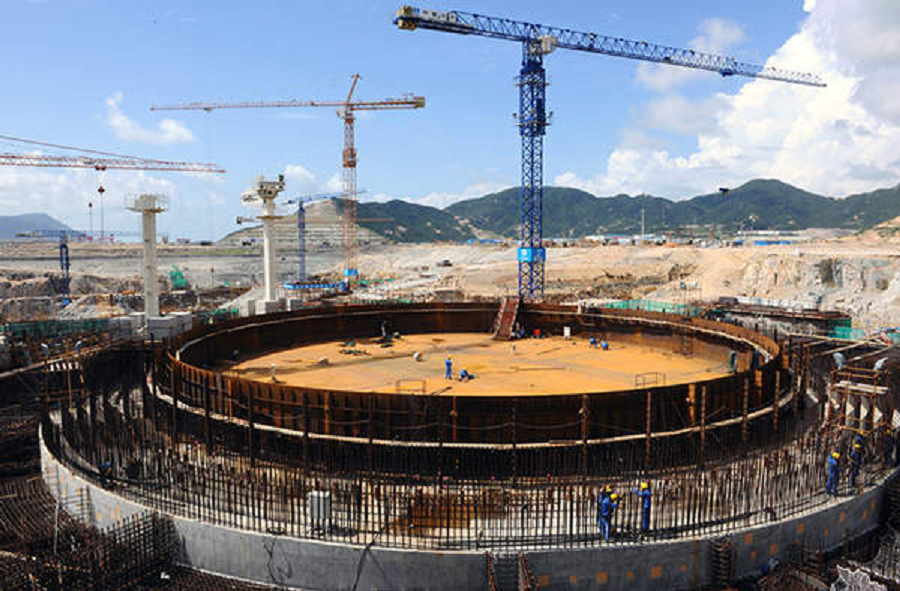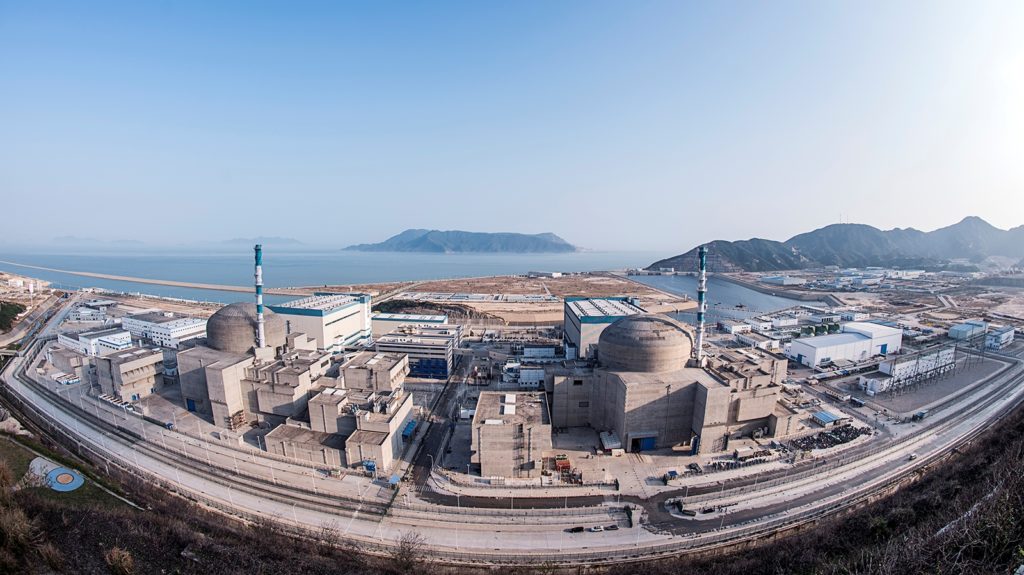
While details are fuzzy at best of an ongoing incident at one of the world’s largest nuclear power plants, a leading Chinese nuclear scientist is dead after yet another suspicious event. Zhang Zhijian, former vice-president of Harbin Engineering University, died on Thursday after somehow “falling off a building.”
Days after China announced that five fuel rods at the Taishan nuclear power plant are damaged, one of China’s leading nuclear scientists died of suspicious circumstances.
“Harbin Engineering University announces with deep grief that Professor Zhang Zhijian regrettably fell off a building and died at 9.34 am on June 17, 2021,” the statement read. “The university expresses deep sorrow over the passing of comrade Zhang Zhijian and deep condolences to his family.”
There was no other official statement about Zhang’s death and his name remained on the leadership list of the university’s website on Friday.
Zhang was a professor at the College of Nuclear Science and Technology at the Harbin Engineering University and served as Vice President of the Chinese Nuclear Society. He was also a member of the standing committee of the Communist Party committee at the university.

Days before his death, China has attempted to clear the air around an incident at one of its nuclear power plants located 85 miles west of Hong Kong. While French company Framatome described an incident there as one posing an “imminent radiological threat” 2 weeks ago, authorities have dismissed the seriousness of such claims and said operations are ongoing and safe.
After weeks of denying anything was wrong, China did finally say that five fuel rods used in one of the two reactors at the facility are damaged, but claim they pose no threat.
“There is no abnormality in the radiation levels around the nuclear power plant, and safety is guaranteed,” said China’s Foreign Ministry Spokesman Zhao Lijian.
Ministry of Ecology and the Environment, responsible for news around nuclear power plants, also said no leak into the environment had occurred. “At present, monitoring results of the radiation environment around the Taishan Nuclear Power Plant show that there is no abnormality in the radiation level around the nuclear power plant,” the statement said.
The housings of about five of the more than 60,000 fuel rods in the Number One reactor are estimated to have been damaged, accounting for less than 0.01 percent of the total number, far lower than the assumed maximum damage proportion of 0.25 percent in the design for the reactor, it said.
China also accused CNN of spreading “fake news”, by sharing the idea that safety limits were raised around the nuclear power plant to hide the situation. In a statement, the Ministry of Ecology and the Environment wrote, “The CNN report was not correct when it said that the National Nuclear Safety Administration had approved raising the limit on the acceptable amount of radiation detected outside the plant to avoid its shutdown.”
“The administration has never approved that, instead, it reviewed and approved adjustment of limits on the amount of radioactivity per unit volume or weight of noble gases in the reactor’s primary circuit,” the ministry said. “This limit is used for operation management and has nothing to do with radiation detection outside the nuclear power plant….The premise in the CNN report is wrong.”

With the jet stream able to transport radioactive particles and gases far from their source, people around the world are continuing to keep their eye on whatever is unfolding at the nuclear power plant. While China admitted that a leak of radioactive gas did make it into the environment in April, they say no radioactive gas or matter has escaped into the environment in this latest incident. During April 9 incident, the Taishan facility leaked what officials described as a “small amount” of radioactive gas. The Chinese National Nuclear Safety Administration said that event was a “Level 0” event that lacked safety significance.
Nevertheless, scientists continue to track wind movement for any potential cloud of suspicious gas rising from the nuclear power plant.
France-based EDF Energy, which partnered with China to build a nuclear power plant to generate electricity for the Guangzhou and Shenzhen areas there, had reached out to the United States for help in dealing with the situation there.
Framatome, the French nuclear reactor business within Electricite de France (EDF), reached out to the United States for assistance in being able to share sensitive information with their Chinese counterparts to deal with whatever situation is unfolding there. China’s state-owned nuclear power companies are banned from obtaining U.S. technology without government approval. Because Framatome previously licensed nuclear power technology from U.S.-based Westinghouse, it may need U.S. government approval to help with the situation unfolding in China.
Due to the close proximity of the plant to its borders, Hong Kong officials have been carefully monitoring air and water for any excess radioactive readings. Hong Kong Chief Executive Carrie Lam told reporters that the Hong Kong Observatory and the Water Supplies Department have been monitoring radiation levels and so far they have not detected anything abnormal.
“With regards to foreign media reports about a nuclear plant in Taishan, Guangzhou, the Hong Kong government attaches a high degree of importance to this,” said Hong Kong Chief Executive Carrie Lam told reporters.
Sources with the White House say they have been aware of the situation for the last two weeks and that the emergency hasn’t yet reached a “crisis” level yet. According to those sources, the White House National Security Council has convened multiple times in recent weeks to discuss the situation, led by NSC Senior Director for China Laura Rosenberger and Senior Director for Arms Control Mallory Stewart. In addition, the White House has been in close communication with the Chinese and French governments and has consulted with subject matter experts at the Department of Energy. No public statements about their findings have been made by the White House.
The Department of Energy, whom the White House said they met with, declined to comment. The International Atomic Energy Agency, a group within the United Nations, told the Associated Press it was aware of the issue and was awaiting information from China.

Framatome designs, manufactures, and installs components, fuel and instrumentation and control systems for nuclear power plants and offers a full range of reactor services; they currently developed nuclear power plants in France, England, China, and have plans to deploy plants in India and Russia.
The Framatome-designed plant in China is owned by the China Guangdong Nuclear Power Group and Electricite de France, the majority owner of Framatome. The plant began operating at the end of 2018 and its second reactor went on-line in September 2019.
According to the latest American GFS global computer forecast weather model, anything being emitted from the power plant would be transported across the Pacific into the United States and Canada over time due to the presence of the jet stream. If noble gases, or worse, radioactive emissions, are released at the plant, they could make their way to North America in a matter of days.
Luk Bing-lam, a nuclear engineering expert at the City University of Hong Kong, told reporters he believes fuel rods are leaking gases produced during nuclear fission. “If the leakage is more severe, then you will start seeing more radioactive material like cesium, rather than gas,” he said.
For now, there is no observation of radioactive gas or material beyond Chineses borders being reported, but scientists are keeping an eye on remote observation collection sites and the global weather pattern to analyze what, if anything, is coming from the troubled nuclear power plant and where it’s headed.
It is unclear what Zhijian’s death mean to the Taishan facility or China’s overall nuclear power capability.